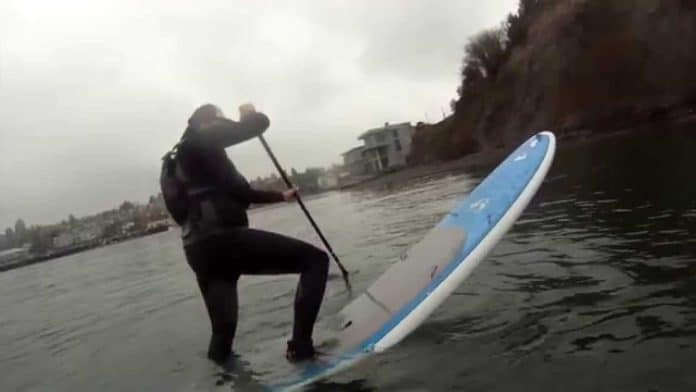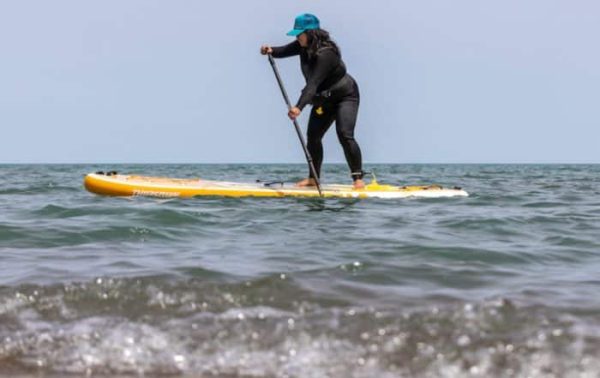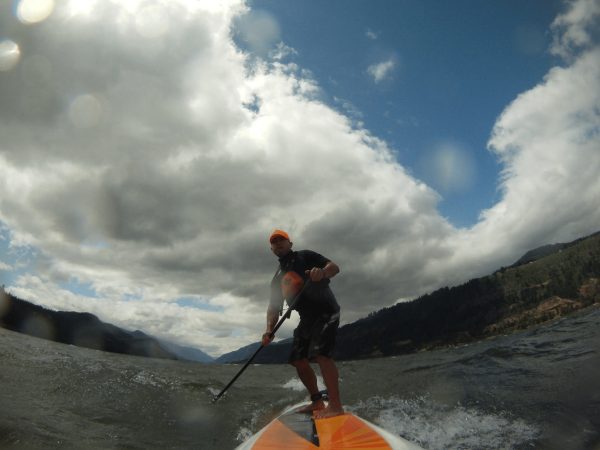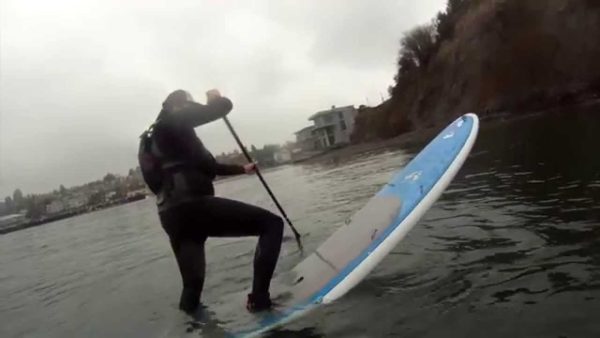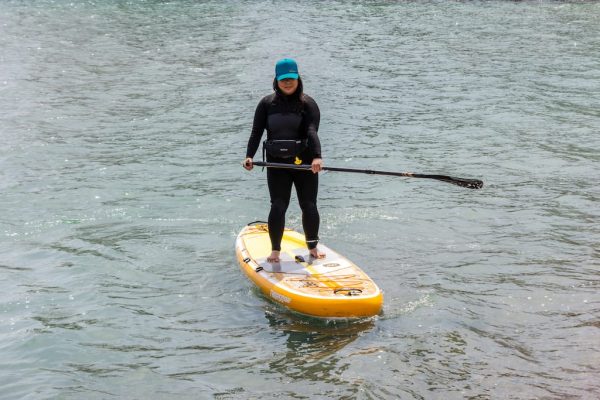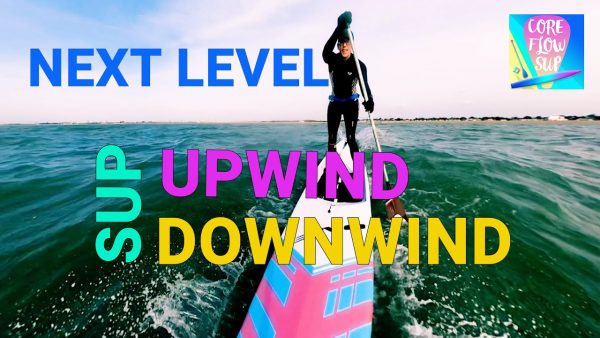Navigating through choppy waters on a SUP board can be a challenging but exhilarating experience. When faced with rough waves and unpredictable currents, it’s essential to have the right techniques and skills to keep you balanced and in control. In this article, we will explore some effective strategies for successfully navigating choppy waters, allowing you to confidently conquer the waves and enjoy your stand-up paddleboarding adventure to the fullest.
Choosing the Right Equipment
When it comes to stand-up paddleboarding (SUP), choosing the right equipment is crucial for a fun and safe experience on the water. The first thing you’ll need to consider is selecting the right SUP board. There are different types of boards available, including all-around, touring, and surfing boards. All-around boards are versatile and suitable for beginners, while touring boards are designed for longer distances and faster speeds. Surfing boards, on the other hand, are shorter and more maneuverable, making them ideal for riding waves.
After choosing the right SUP board, the next step is to select the right paddle. Paddle length is an important factor to consider. To determine the correct length, stand next to the paddle and raise your arm above your head. If the handle of the paddle reaches your wrist, it’s the right length for you. Paddles also come in different materials, such as aluminum, fiberglass, and carbon fiber. Carbon fiber paddles are lightweight and provide excellent performance, but they are also more expensive.
Lastly, using the proper leash is essential for your safety while paddleboarding. A leash is a cord that attaches to your ankle or calf and connects to the board. It keeps you attached to the board, even if you fall off, preventing the board from drifting away. When choosing a leash, make sure it’s the right length and thickness for the conditions you’ll be paddleboarding in. A longer leash is preferable for calm waters, while a shorter leash is better for choppy or windy conditions.
Understanding the Conditions
To navigate through choppy waters on a SUP board, it’s essential to understand the conditions you’ll be facing. Three key factors to assess are wind direction, current, and potential hazards.
Evaluating the wind direction is crucial as it affects your paddling experience. Paddling against the wind can be challenging, whereas paddling with the wind can provide a smoother ride. Before heading out, check the weather forecast and observe the direction the wind is blowing. This will help you plan your route and adjust your technique accordingly.
Assessing the current is equally important. Strong currents can affect your paddleboarding experience and make it more challenging to maneuver. Take note of the direction and speed of the current. If there is a strong current, consider adjusting your route to navigate more comfortably and efficiently.
Identifying potential hazards is crucial for your safety. These can include submerged rocks, shallow areas, and other watercraft. Take the time to scan the area and familiarize yourself with any potential dangers. It’s also a good practice to understand the local regulations and rules regarding watercraft and navigation.
This image is property of cdn.thursosurf.com.
Getting in Position
Before you start paddling through choppy waters, it’s vital to find a suitable launch spot. Look for areas that offer easy access to the water and have enough space for you to comfortably enter without obstructions. If possible, choose a spot where the water is calm, as it will be easier to get yourself and your equipment ready.
Entering the water safely is the next step. Start by kneeling on the board near the center. Slowly enter the water by stepping forward with one foot and then the other, maintaining your balance. Once both feet are on the board, transition to a standing position. Keep your knees slightly bent and maintain a low center of gravity for stability.
Positioning yourself on the board is crucial for navigating through choppy waters. Stand with your feet shoulder-width apart, placing your dominant foot slightly forward for better control. Position yourself in the middle of the board to maintain balance and stability. Keep your gaze forward and your body relaxed, ready to adapt to the changing conditions.
Maintaining Proper Technique
Maintaining proper technique is essential for efficient and safe paddleboarding in choppy waters. Three key aspects of technique to focus on are using core strength, paddling with a high cadence, and maintaining an upright stance.
Using core strength helps you generate power and stability while paddling. Engage your core muscles by keeping your torso upright and rotating your body with each stroke. This will allow you to harness the power of your torso rather than relying solely on your arms. Engaging your core will also help stabilize your body and prevent unnecessary movements.
Paddling with a high cadence means taking quick, efficient strokes. This will help you maintain forward momentum and make it easier to navigate through choppy waters. Focus on a smooth and fluid motion, engaging your back, shoulder, and arm muscles as you paddle. Avoid making long sweeping strokes, as they can waste energy and slow you down.
Maintaining an upright stance is crucial for balance and stability. Stand up straight, keeping your gaze forward, and avoid hunching over the board. Keep your knees slightly bent and your weight evenly distributed between both feet. By maintaining an upright stance, you’ll be better equipped to react to any changes in the water conditions.
This image is property of images.surferseo.art.
Adjusting to the Choppy Water
Choppy waters can pose a challenge when paddleboarding, but with the right techniques, you can navigate through them smoothly. To adjust to choppy water, focus on bending your knees, using a smooth paddling motion, and reacting to oncoming waves.
Bending your knees is crucial for stability. By slightly lowering your center of gravity, you’ll have better balance and control over your board. This will help you absorb the impact of choppy water and maintain stability throughout your paddleboarding session.
Using a smooth paddling motion is equally important. Avoid a choppy and erratic paddle stroke, as it can disrupt your balance and waste energy. Instead, focus on maintaining a steady rhythm and keeping your strokes close to the board. This will provide stability and forward momentum, even in rough waters.
Reacting to oncoming waves is essential to navigate through choppy waters. When you see a wave approaching, bend your knees and distribute your weight evenly to maintain stability. As the wave passes under your board, adjust your balance accordingly to minimize any impact or instability. Remember to keep your gaze forward and stay focused on maintaining control.
Dealing with Unstable Conditions
Unstable conditions, such as strong currents, swells, and crosswinds, require specific techniques to navigate through successfully. To deal with unstable conditions, focus on balancing against the current, using a sidestroke technique, and reacting to swells and crosswinds.
Balancing against the current is crucial when facing strong currents. Position your board diagonally to the current, with your paddle on the upstream side. This will help you maintain stability and prevent the current from pushing you off course. Gradually paddle upstream, maintaining balance and adjusting your strokes as needed.
Using a sidestroke technique can be useful when dealing with swells and crosswinds. Instead of taking forward strokes, engage in a side-to-side paddling motion. This will help you maintain stability and prevent the elements from affecting your balance. Adjust the direction and intensity of your strokes based on the direction and strength of the swells and crosswinds.
Reacting to swells and crosswinds is essential for staying on course. Keep your gaze forward and anticipate the direction and intensity of the swells and crosswinds. Adjust your stance and paddle accordingly, leaning into the swells to maintain balance and stability. By staying proactive and adaptable, you’ll be able to navigate through unstable conditions with confidence.
This image is property of i.ytimg.com.
Navigating Through Waves
Navigating through waves requires specific techniques to ensure a smooth and controlled ride. To navigate through waves, focus on determining the optimal angle, timing your paddling, and steering around breaking waves.
Determining the optimal angle to approach the waves is key. Aim to paddle into the waves at a slight angle rather than head-on. This will help you maintain stability and prevent the waves from crashing directly into your board. Experiment with different angles to find the most comfortable and efficient approach.
Timing your paddling is crucial for navigating through waves. Watch the patterns of the waves and time your strokes accordingly. Paddle with intensity and speed as you approach a wave, using the momentum to ride over it. As the wave passes under your board, adjust your balance and maintain a steady cadence to keep moving forward.
Steering around breaking waves is essential for stability and safety. Breaking waves can be powerful and unpredictable, so it’s important to avoid them whenever possible. Assess the direction and speed of the breaking waves and adjust your route accordingly. Use your paddle as a rudder to steer around breaking waves, maintaining balance and control throughout.
Avoiding Potential Dangers
When paddleboarding in any waters, it’s important to be aware of potential dangers and take precautions to avoid them. Some potential dangers to watch out for include spotting hidden obstacles, avoiding collisions with boats, and staying clear of strong currents.
Spotting hidden obstacles is crucial for your safety and the integrity of your SUP board. Take the time to scan the water surface and look for any submerged rocks, logs, or other potential hazards. If you encounter one, try to steer clear of it or navigate around it safely. Be mindful of shallow areas as well, as they can damage your fin or even cause you to fall off the board.
Avoiding collisions with boats is essential for the safety of both paddleboarders and boaters. Stay vigilant and keep a lookout for any watercraft in your vicinity. Be aware of the right of way rules and give way to bigger vessels. By maintaining a safe distance and being aware of your surroundings, you can reduce the risk of accidents and ensure a safe paddleboarding experience.
Staying clear of strong currents is crucial for your safety and navigation. Strong currents can be challenging to paddle against, so it’s best to avoid them whenever possible. Plan your route to stay away from areas with known strong currents, and always assess the current before you set out on your paddleboarding adventure. Being aware of the currents will help you plan your paddling strategy and ensure a smooth and enjoyable experience.
This image is property of cdn.thursosurf.com.
Recovering from Falling
Falling off your SUP board is a possibility, especially in choppy waters. Knowing how to recover quickly and safely is essential. To recover from falling, react quickly, get back on the board, and retrieve strayed equipment.
Reacting quickly when you fall is vital. Take a moment to assess your surroundings and ensure your safety. If you’re in deep water, swim towards your board and retrieve your paddle if it has floated away. If you’re near the shore, make sure to stay clear of any potential hazards before attempting to get back on the board.
Getting back on the board requires technique and control. Swim or paddle towards the board and position it parallel to you. Grab the center of the board and use your upper body strength to pull yourself onto it. Once on the board, position yourself on your knees and slowly transition to a standing position. Take your time and make sure you feel balanced and stable before resuming your paddleboarding.
Retrieving strayed equipment is important to prevent any litter or hazards in the water. If your paddle has floated away, swim or paddle towards it and bring it back onto the board. Secure it properly to prevent it from floating away again. Be mindful of other paddleboarders or boaters while retrieving your equipment.
Building Experience and Confidence
Building experience and confidence in different paddling conditions is a journey. Starting with calmer waters, practicing in different conditions, and learning from experienced paddlers are ways to enhance your paddleboarding skills.
Starting with calmer waters is an excellent way to build confidence and familiarize yourself with the basic techniques. Choose a location with calm and gentle waters, such as a lake or a sheltered bay. Practice your strokes, balance, and turning in these conditions to develop a solid foundation. As you gain more experience and confidence, you can gradually venture into more challenging waters.
Practicing in different conditions is key to becoming a versatile paddleboarder. Once you feel comfortable in calm waters, gradually expose yourself to different conditions, such as choppy waters, waves, or currents. Each new condition will present unique challenges and help you develop specific skills. Always prioritize safety and gradually push your limits as you gain more experience.
Learning from experienced paddlers is a valuable resource to enhance your skills. Seek out opportunities to join guided excursions, take lessons, or connect with local paddleboarding clubs. The knowledge and experience of more seasoned paddlers can provide valuable insights and tips to navigate through different conditions. By learning from others, you can accelerate your progress and become a more confident paddleboarder.
In conclusion, navigating through choppy waters on a SUP board requires proper equipment, understanding of the conditions, good technique, and adaptability. By choosing the right equipment, such as the appropriate board, paddle, and leash, you’ll have a solid foundation for your paddleboarding adventures. Understanding the conditions, including wind direction, currents, and potential hazards, will help you plan and adapt your route accordingly. Maintaining proper technique, adjusting to choppy water, dealing with unstable conditions, and navigating through waves will ensure a smooth and enjoyable paddleboarding experience. Lastly, avoid potential dangers, recover quickly from falls, and continue to build experience and confidence in different paddling conditions. With these guidelines, you’ll be well-prepared to navigate through choppy waters on a SUP board and have countless memorable experiences on the water.
This image is property of i.ytimg.com.

